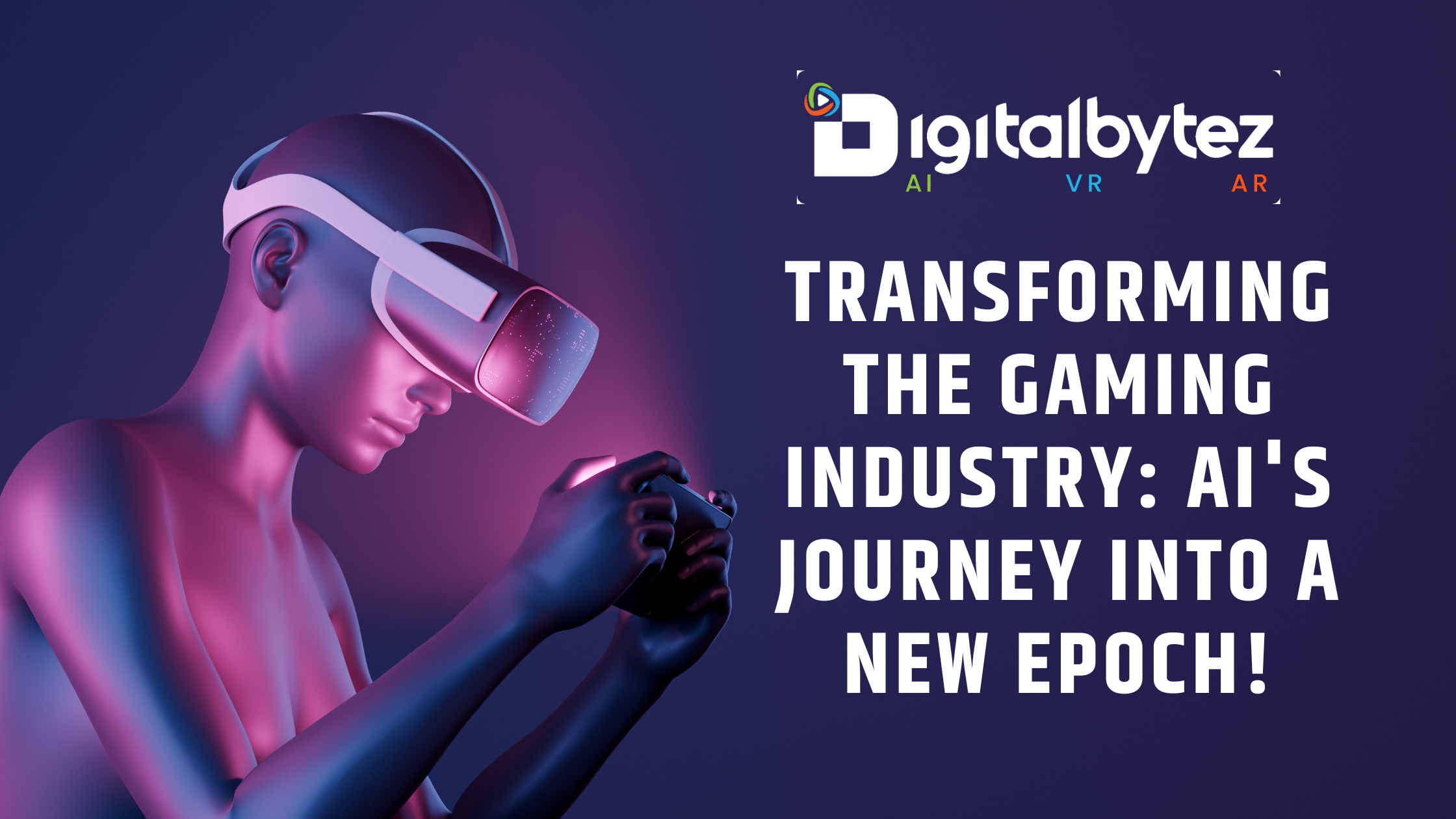
How AR and VR Shaping the Future of the Metaverse
Step into a realm where reality transcends its limits, as augmented and virtual worlds converge in the symphony of the Metaverse.“
The Metaverse is a term coined by science fiction writer Neal Stephenson in his novel “Snow Crash” in the early 1990s. It refers to a virtual universe that is fully immersive, where individuals can interact with the environment and other users. The Metaverse has become increasingly important as technology advances, and companies are investing billions of dollars in its development. However, the current limitations of the Metaverse, such as the lack of realistic avatars and mobility, need to be addressed. This is where AR and VR technologies come in.
The Metaverse has been gaining more and more attention in recent years, and for good reason. It promises to be a fully interactive, immersive online experience that will allow users to engage with others in real-time. However, the development of this virtual world is far from complete and requires the integration of Augmented Reality (AR) and Virtual Reality (VR) to be truly successful. In this blog post, we discuss the role of AR and VR in Metaverse development, their benefits, challenges, and how various industries are leveraging these technologies to shape the future. Read it out now!
An Overview of AR and VR
Before diving into the significance of AR and VR in the Metaverse, let’s briefly understand what these technologies entail.
Augmented Reality (AR): Augmented Reality (AR): Augmented reality (AR) combines the real world with virtual objects or digital information to enhance the user’s perspective and interaction with their surroundings.
Virtual Reality (VR): Virtual Reality (VR) creates a simulated environment separate from the real world. It immerses users through headsets, providing a fully immersive visual experience and sometimes incorporating other sensory inputs like audio and touch to enhance presence.
What is the Metaverse?
The concept of the Metaverse brings forth a captivating vision—a realm that exceeds the boundaries of our physical reality and intertwines with the digital world. It is an immersive virtual space where individuals come together, bridging the gap between physical and digital realms.
The metaverse is far more than virtual reality; It is a comprehensive platform that allows meaningful interaction not only between users but also with the environment.
Imagine a place where you can fully immerse yourself, where the boundaries of what is real and digital get blurred into an extraordinary experience. Within the Metaverse, endless possibilities await—whether it’s collaborating with colleagues on projects, engaging in thrilling adventures, connecting with friends and loved ones, or embarking on explorations of uncharted territories
AR and VR in the Metaverse
AR and VR play an utmost important role in the development and actualization of the Metaverse, as they bring about incredible advancements in user experiences. By harnessing the power of these technologies, the Metaverse offers users captivating and immersive encounters like never before.
AR, or Augmented Reality, enhances the real world by overlaying virtual elements, opening up a gateway for users to access information, interact with virtual objects, and seamlessly blend physical and digital realms. It creates a dynamic environment where users can effortlessly merge the tangible and intangible, resulting in an enriched and interactive experience.
On the other hand, VR, or Virtual Reality, takes users on extraordinary journeys to entirely virtual worlds within the Metaverse. By immersing users in these virtual environments, VR enables them to explore uncharted territories, unleash their creativity, and interact with the digital realm in unimaginable ways. VR acts as a gateway to infinite possibilities, where users can transcend the boundaries of the physical world and engage in adventures.
With AR and VR, the Metaverse unfolds as a mesmerizing and transformative landscape, redefining human experiences and unlocking the full potential of our digital future.
Challenges and Limitations
The Metaverse offers exciting frontiers for integrating augmented reality (AR) and virtual reality (VR), opening up vast possibilities for immersive experiences.
However, with its enormous potential, this technology also comes with a number of challenges and limitations that need to be addressed. There are some technical constraints, such as hardware requirements and processing power, that can limit the availability and widespread adoption of this technology. Additionally, privacy and security concerns arise in the Metaverse, as users interact and share personal information within virtual environments Furthermore, ensuring seamless integration and interoperability across various AR and VR platforms poses a significant challenge for developers and industry stakeholders.
Industries Leveraging AR and VR in the Metaverse
There is a wide range of industries that are actively leveraging AR and VR technologies in the Metaverse to revolutionize their operations and provide enhanced experiences to their customers. Let’s explore a few notable examples:
Education and Training:
In the world of education, AR and VR are revolutionizing the methods through which students learn and interact with educational content.
By utilizing immersive simulations and virtual field trips, students can now explore historical landmarks, delve into scientific concepts, and engage with virtual objects, resulting in an enhanced understanding and improved retention of knowledge. Moreover, virtual classrooms and collaborative spaces within the Metaverse facilitate the development of global learning communities, overcoming geographical constraints and encouraging cross-cultural interaction among students.
Gaming and Entertainment:
The gaming and entertainment industry has long been at the forefront of AR and VR innovation. In the Metaverse, gamers have the opportunity to fully immerse themselves in virtual worlds that provide levels of engagement and social interactions like never before..
Whether using virtual reality headsets or augmented reality overlays, players can experience incredibly realistic gameplay, interact with virtual characters, and interact with other players in multiplayer shared virtual spaces. . The Metaverse introduces new possibilities for storytelling, gameplay mechanics, and the monetization of virtual assets.
Healthcare and Medicine:
AR and VR technologies are revolutionizing the healthcare and medical fields by improving surgical precision, enhancing medical training, and offering innovative solutions for mental health treatments. The potential benefits of these technologies in healthcare are vast, and ongoing advancements in AR and VR hold promise for further transformative applications in the future.
Real Estate and Architecture:
In the realm of real estate and architecture, AR and VR technologies are revolutionizing the way properties are showcased and designed. Virtual property tours, enabled by VR, allow potential buyers to explore and visualize spaces remotely, saving both time and resources.
Architects and designers can create virtual prototypes, allowing the clients to experience and provide feedback on architectural designs before construction begins. AR overlays can also provide valuable information about properties, such as property details, pricing, and neighborhood amenities, enhancing the buying and selling experience.
Retail and E-commerce:
AR and VR are reshaping the retail and e-commerce world by offering immersive and personalized shopping experiences . One of the key advancements is virtual try-on technology, which enables customers to visualize how products, like clothing or furniture, would appear in real life before making a purchase. This empowers customers to make informed decisions and reduces the likelihood of dissatisfaction upon product delivery. These technologies bridge the gap between online and offline shopping, enhancing customer engagement and driving sales.
Conclusion
The development of the Metaverse is intricately tied to the advancements in augmented reality (AR) and virtual reality (VR). These technologies are pivotal in creating immersive and interactive virtual experiences, seamlessly blending the real and virtual worlds.
The Metaverse holds immense potential in various industries, ranging from education and healthcare to gaming, real estate, and retail. However, challenges such as technical barriers, privacy concerns and connectivity need to be addressed to fully realize the potential of AR and VR in the Metaverse.
FAQs
What is the Metaverse?
Simply put, the term “metaverse” is a single, shared, immersive, continuous, 3D virtual world where people can experience life in ways they couldn’t in the real world.
How do AR and VR contribute to the Metaverse?
AR and VR technologies greatly enhance the user experience in the Metaverse by offering immersive and interactive virtual environments. AR overlays digital information in the real world, while VR transports users to entirely virtual realms, enabling them to interact and explore within the Metaverse.
What are the advantages of AR and VR in the Metaverse?
AR and VR technologies provide users with personalized and immersive experiences, enhancing communication and collaboration, enabling realistic simulations and training, and fostering creativity and innovation within the Metaverse. These technologies allow individuals to customize their virtual environments, connect with others regardless of physical location, and create and share their own virtual content.
What are some challenges of implementing AR and VR in the Metaverse?
Technical constraints, such as hardware requirements and processing power, can significantly impact the accessibility of AR and VR technologies. Privacy and security concerns also arise, as users interact and share personal information within virtual environments.
How are industries leveraging AR and VR in the Metaverse?
Various industries are leveraging AR and VR technologies in the Metaverse. In education, immersive simulations and virtual classrooms enhance learning experiences. Gaming and entertainment offer realistic gameplay, social interaction, and healthcare benefits from surgical guidance and virtual therapies. Real estate showcases properties through virtual tours, and retail provides personalized shopping experiences with virtual try-on technologies.









